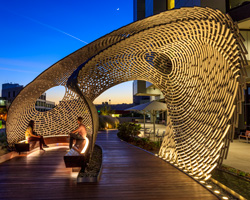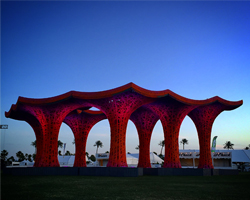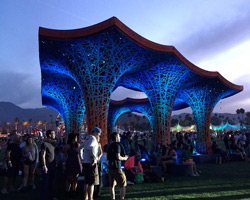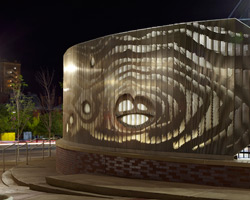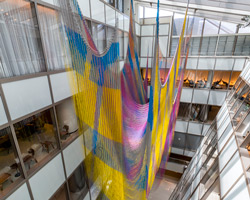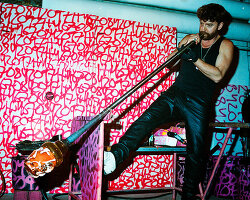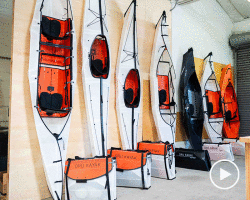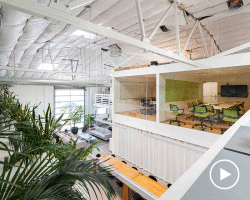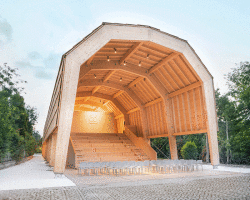KEEP UP WITH OUR DAILY AND WEEKLY NEWSLETTERS
the nordic pavilion, built from forest-managed wood, champions circular design, while saudi arabia blends computational design with vernacular cooling techniques.
designboom visits portlantis ahead of its public opening to learn more about the heritage and future of the port of rotterdam.
connections: +1340
the two photographers documented over 100 structures from the 1960s-80s, from cemeteries and sanctuaries to port buildings and residential complexes.
the founder of jiakun architects, is recognized for his humanistic approach, crafting spaces that combine the everyday with the utopian.
connections: 39
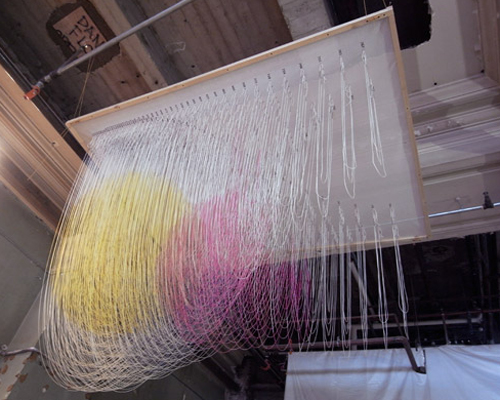
 ball and nogues joined forces in 2005, working collaboratively with designers, engineers, and consultants image © designboom
ball and nogues joined forces in 2005, working collaboratively with designers, engineers, and consultants image © designboom ball and nogues’ studio in los angeles image © designboom
ball and nogues’ studio in los angeles image © designboom ‘gravity’s loom‘ image © designboom
‘gravity’s loom‘ image © designboom production of ‘gravity’s loom’ image © designboom
production of ‘gravity’s loom’ image © designboom detail image © designboom
detail image © designboom image © designboom
image © designboom model making image © designboom
model making image © designboom gaston nogues, benjamin ball and ‘insta-llator’ image © designboom
gaston nogues, benjamin ball and ‘insta-llator’ image © designboom the ‘instal-lator’ image © designboom
the ‘instal-lator’ image © designboom up close look at the four computer-controlled air brushes image © designboom
up close look at the four computer-controlled air brushes image © designboom up close look at the four computer-controlled air brushes image © designboom
up close look at the four computer-controlled air brushes image © designboom birgit lohmann, designboom’s editor-in-chief talks to benjamin ball image © designboom
birgit lohmann, designboom’s editor-in-chief talks to benjamin ball image © designboom half-finished ‘globs’ inside the studio image © designboom
half-finished ‘globs’ inside the studio image © designboom starting point are mickey balloons image © designboom
starting point are mickey balloons image © designboom moulds for a papier mache form image © designboom
moulds for a papier mache form image © designboom an idea for a new lamp –
an idea for a new lamp –  crafty – in studio art image © designboom
crafty – in studio art image © designboom a view into the studio image © designboom
a view into the studio image © designboom experimentation with paper pulb image © designboom
experimentation with paper pulb image © designboom organic herbs growing on the paper pulp sculpture image © designboom
organic herbs growing on the paper pulp sculpture image © designboom ‘the craddle’ image © designboom
‘the craddle’ image © designboom drawings image © designboom
drawings image © designboom the workshop and tools image © designboom
the workshop and tools image © designboom ‘screen’ model of a new project for the 10th mission teen center, san francisco image © designboom
‘screen’ model of a new project for the 10th mission teen center, san francisco image © designboom image © designboom
image © designboom